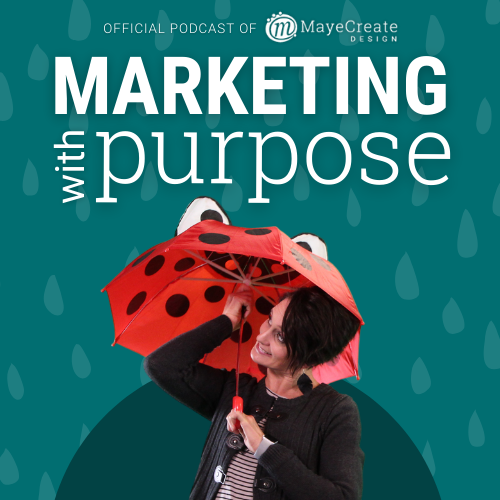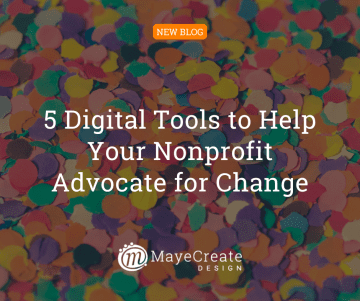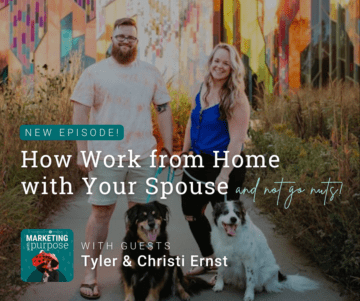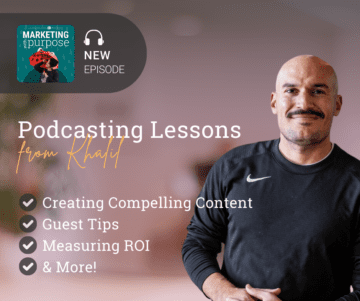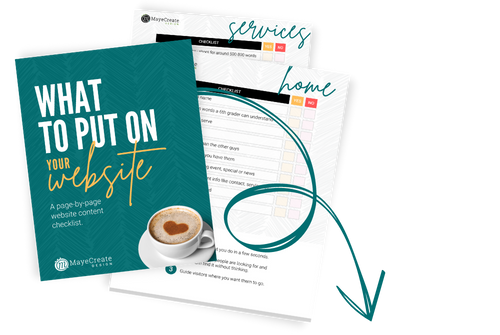Launching a Successful 5K, with Expert Guest RJ Huebert
June 18, 2021
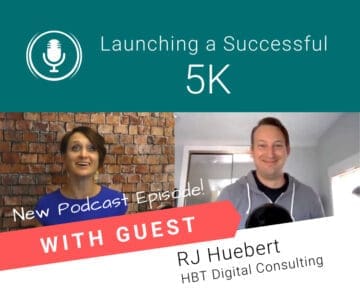
CONSUME CREATIVELY
This content is available in:
This content is available in:
AUDIO
TEXT
RJ Huebert, founder and managing principal of HBT Digital Consulting, runs 5K’s. But strapping on his running shoes is just part of his gig… he started his 5K races as a money making venture and now manages 3 race brands that bring in over a thousand participants every year.
With so many 5K fundraisers out there I wanted his opinion on how you could set your 5K apart from others and leverage it to raise more money for your organization. So I asked and he answered!
Podcast Summary Notes:
Monica: You actually do run 5k’s, don’t you?
RJ: Literally, I am the event director and do all the heavy lifting. But I also run them for fun.
Monica: Tell us a little bit about what you do every day and what in the world made you decide to produce all these 5k’s?
RJ: I’ve been an event director or race director for about 10 years, and races are in Florida. They’re called the Great Mother’s Day race, the great Father’s Day race, and the Great Gay 5k.
Monica: You have a digital agency–do you promote your races using your amazing digital knowledge?
RJ: I started with the races and the races really kicked off in 2012. I’ve been an agency owner for only two years.
When I was the race director, you know, we’d have to do our own race promotion. So basically, that got me into the Facebook ads and the Google ads and buying specific race keywords. And you know, 10 years later, it all translated to my own agency. But I remember just buying specific 5k race keywords in the Tampa Bay market, and paying like 40 to 60 cents a click, and we’re talking like 10 years ago, it was so cheap.
Monica: How many people do you usually have running one of these wonderful races?
RJ: That’s a great question.
So currently, like the great Mother’s Day race is in Sarasota, and we’re on Siesta Key beach. And then in Tampa, we’re at Al Lopez Park. It’s a park vibe. We run around the park twice. That’s our biggest race. We have about 800 people a year that come to that. And in Sarasota, it’s about 350 to 400. We do it on two separate days. So we do it on Mother’s Day weekend. But we’ll do the Siesta Key beach race on Saturday. And then Sunday morning, the actual Mother’s Day at Lopez Park.
Monica: What made you decide to do these things? I know you run, but why produce a race?
RJ: So I was in grad school at USF…
attending with my one of my best friends, Claire Selius; she’s actually the co-race director with me. And we’re going to grad school at USF. And we’re sitting in all these marketing classes. And you know, we’re learning book knowledge and we’re hearing case studies and we’re both like, “Can we do this ourselves? Can we launch a brand? Can we take something that has never existed before, build a community and get people to pay money to run?” And we did, we launched it. We took baby steps.
The first year we had 150 runners, which way surpassed what I thought.
Honestly, I was thinking like the first year ROI and again, like 60, 70 runners, and thankfully through partnerships, and through our own network, we were able to get 100 for sure.
Monica: Do your races pay for themselves? Are they for profit or just fun projects?
RJ: The races are for profit and we definitely tell people that we do donate 10% net to a local charity.
I would say the races generate more money than I expected, but less than a full time job.
Monica: Is putting these races on a full time job?
RJ: No, no, no.
And I don’t know how many hours it would take, if I really sat there and thought about all of the work that goes into it. What’s great is so I live in Pittsburgh, while the races are produced in Florida. So being a digital guy, first, I can handle 90% of what I need to do from here. I call the parks, I can get online registration up, I can order the T shirts and bla bla bla bla bla, through the social media and ads. I actually fly down race week. Claire and I will put together all the shirts, pick ups, do all the running around grabbing bananas, and stuff like that.
Luckily, and thankfully, Claire is my woman on the streets down there. So she’s living in St. Pete, which is in Tampa Bay. And if we need to make pickups, meet somebody, go to the parks, shake hands, kiss babies, she’s there to do that.
Monica: So to clarify to all of my nonprofit friends, you can produce a 5k, but it doesn’t have to be your full time job, and you can manage to make money for your nonprofit?
RJ: One hundred percent.
And you need to be thinking as an entrepreneur. You have margins, and you have to figure out, “do I really want to pay $8 for this really premium t-shirt that looks really cool and has the latest technology? Or will the $5 shirt suffice–will it give people the same feeling as the $8 shirt?” Same with the metals. Do you need an eight inch metal that looks like Mr. T’s gold chains? Or can I give them another metal that’s a little bit smaller, maybe less colors?
There are things you can negotiate. The non-negotiable is that you have to give participants a great experience.
You have to make sure it’s well-timed, that setup tables and registration are there. You have to have the water, food, pictures… So you have to get the basics right. But then there’s flexibility in other areas. You don’t have to have a fancy metal for your finishers.
I’ve seen people give away hats, visors, headbands… You can make it interesting, you can make it decently priced. I did the Pittsburgh half marathon. And granted that entry fee was give or take 100 bucks, but we got a real nice water bottle with our long sleeve shirt. So if you have a premium price point race, you can build in those kinds of nicer items. If you get sponsors, there’s another way to provide nicer items.
This is a tip for your nonprofit friends looking to throw races;
You can really make the money on the sponsorships. So if you find some key partners, you can basically ask them for whatever you want to ask for. You know, they can negotiate. But if you get 510 big sponsors, that can cover the whole expense of the race plus more, and you might be able to pocket the entry fee. So definitely ask everyone for sponsorships.
Monica: What other considerations should we think through before deciding to hold a 5k?
RJ: You need to think about location.
Because if you want to run in the downtown city streets of Tampa, or Pittsburgh, or wherever you are, if you want to close off roads and get police, that is going to be so expensive. I know it’s beautiful, and so fun to run downtown, you’re seeing all these cool shops, and people are waving to you from the coffee shop.
But let me give you two real examples here. If I hold the race on Siesta Key beach, it’s give or take $500 to rent the space. For Tampa Bay Park, we have to shut down the entire park. We have to get overflow parking. It’s a headache. It costs up to three grand just to hold the 5k race there in the morning, because you’re shutting it down for half the day.
So that’s something to think about; you can hold a $500 race on the beach, or for $3000 you can be in a park. As long as you have the race numbers, you can make it work.
And you did mention the distances. So 5k–what’s the real max that someone’s going to pay for a 5k? Active.com came to Florida, invited all the local race directors together, and basically gave us a price breakdown. He said, “how much in the state of Florida are people willing to pay for 5k?” Everyone in the room kind of looked at each other. We’re thinking $25 or $30. He said, “based on our data and actual signups, the average person is willing to pay $45 for a 5k”, which surprised everybody.
Now everyone’s thinking “wow, I should be charging a lot more for my 5k”.
But maybe that’s the cap, whereas you throw a 10k marathon or half marathon and you’re charging $75, $90, $100 an entry. That can really start to add up. Because once you have your park reserved, you can run 5k or a half marathon if you want to do enough loops. It’s really up to you, but the money is in the longer runs for sure.
Monica: So hey, friends out there who are not runners; you can totally be a part of all the races, just by showing up. My husband and my kids come out and they make little signs and hold them out. They try to run in front of us and give us hugs. It just feels so good to have everybody involved in the race.
RJ: That’s what we were trying to do with the great Mother’s Day race.
What do you typically do on Mother’s Day with your family? And I’m just generalizing here, but maybe you get breakfast. Maybe you get some flowers and candy. Maybe you guys go out to eat. It’s great. I love it. I love my mom. I love taking care of her. I love my family. But was there an experience that I could give them that they could remember? I remember traveling, I remember races… Can I give them an experience that they’ll want to do together? That’s more registrations by the way. Can we make it an annual event where maybe the son or daughter wants to beat the mom or vice versa year over year?
So here’s something for the nonprofits out there…
I created my event on a specific holiday. Where I failed is; if something happens, some catastrophe, or we miss the holiday, I can’t go to other states and locations to hold it. I have to be in one place on one specific weekend. Whereas if you have some flexibility on your races or race dates or names, you can theoretically hold that race anywhere, any time of the month or year.
Monica: What makes a great race brand? Because some nonprofits are going to call it the name of their nonprofit, but does that work for everybody?
RJ: That’s such a great question. And, I mean, you’re the brand master. But, let me think.
So there’s a couple names that I cringe over and there should be some creativity. I don’t know that the Great Mother’s Day race is any more creative than anything else, but it’s more about the experience than the name.
So you can create a brand around an experience too.
Our kind of thing that we love to do is to give free race pictures. You’ll notice on bigger races, I’ll put a giant watermark right in your face. But you can kind of see yourself running, which is fine. Even post it on social and say “I was here, I did it, look at me”.
But what we’ll do is we’ll have our photographer out there and everyone gets a shot. We’ll upload it and say, “tag it, share it”, and watermark it with our logo on the bottom. It’s a free thing that we’re giving, but then we get the extended benefit of people sharing and tagging and seeing our logo.
Another thing my race partner and I have never seen at a race was a photo booth.
So we started bringing out an actual photo booth with our friends at Premier Photo Booth (Shout out, Chris). They show up and they bring a ton of disguises and mustaches and glasses. And that’s completely free, everyone gets three photos. And the photo booth is pretty advanced where they can upload it directly and send it to their phones. So people have it, they don’t have to carry around the photos too. So it’s those little things, little experiences that add up to something which helps the brand.
Monica: Can you ask supporters and businesses to pay for things like a photo booth, or donate their time?
RJ: Ask, ask, ask.
Yes. And do you know people? One of my favorite things is ambassadors, race ambassadors, aka influencers. People who will wear your stuff, will talk about your race, will hand out your postcards, will tell their whole HR department, “Hey, can we get 20 registrations for our whole team because we all want to run together and get our group shot?”
We incentivize our ambassadors. If they get five people to use a registration code, they get a free race entry. If they hit 10, they might get an Amazon gift card. 15 is like a baller gift. That’s one way to boost up. You’ve got to think big when you’re trying to recruit.
I’m sorry, creating one Facebook event will not do it for you.
You’ve got to partner with running stores, you’ve got to get your posters up, you’ve got to print 1000s of postcards and put them at the Jamba Juice. Wherever you want to go. You’ve gotta get ambassadors and you got to physically mail them product.
It’s a step. And it takes a while. And we did not do all this our first year. So don’t cry and say I can’t do it. All you can do is take a step. And you keep building, building, building momentum.
Monica: How did you adjust along the way to find more success in your races?
RJ: More promotion.
Year one, we just went up with a running store. And they did basically running store promotions for us, let us set up tables, did the posters, did an email blast. And then we started getting ambassadors. And then we partnered with a local newspaper and asked for a free quarter page ad. And hey, we’ll throw your logo on everything; the T shirt in the bags, we’ll hand out your newspapers, whatever you want, just give us some ad space. So now we’re in one of the biggest newspapers in Tampa Bay going out to tens of thousands of people.
Also, relationships in life are everything.
Let me just tell you about one; Susan Harmeling (shout out) in Tampa Bay has one of the best races in the United States. It’s called the Gasparilla Distance Classic. It’s a half marathon. It’s a 10k, 5k. It’s a whole weekend. I mean, they probably get close to 50,000 runners. It’s been an event going on now for 20 some years. I developed a relationship with her just in the local running community. And I asked her, “hey, Susan, you have a virtual goodie bag”–because with so many people, it’s hard to do a physical product. “Can we put our race and give a 10% off entry into the virtual goodie bag?” And she said, “Yeah, no problem at all.”
So now our race is getting blasted to runners with a discount code, and kind of a co-stamp of approval from one of the largest races. So, you’ve got to make friends, you’ve got to see how you can help. I volunteered with her race. I helped close sponsorship deals for her. You’ve got to pull a little bit of weight too.
Ask. Be friends. Network.
In Tampa Bay, there was a race director’s meetup every month. There’s 10 of us with different races, different sizes. And we asked, ”how can we help each other? What can we do? How do we not compete?”, because everybody can get a slice of pie. Everybody can make money. There was so much support and knowledge. This race director community and asking for help was key from year one to year five.
Every nonprofit who wants to have a race can be successful; there’s money, and service and volunteers for everybody.
Try. If there’s not something in your community like this, make one. Invite a friend, tell him to bring a friend.
Monica: So I guess one idea might be, if you’re gonna think about doing a 5k, maybe volunteer for an existing 5k.
RJ: Yes–and if you’re running a 5k, take care of your volunteers.
One thing Claire and I love to do–and this only happened the first three years when we were kind of smaller, we’d have maybe 10 or 15 volunteers. You didn’t need too many for a 5k–we would invite them to a barbecue a couple of weeks after the race. We would provide all the food, all the booze as a thank you for volunteering.
Monica: Are you following up with your runners after the race? Do you keep in contact with them throughout the year?
RJ: It’s kind of its own clock and wheel at this point.
The great Mother’s Day race is happening, we’re promoting the Father’s Day race, and then the Great Gay 5k. So they kind of step into each other a little bit. So there’s always a “something’s coming” kind of communication. So there’s the Father’s Day races in June, Great Gay in August, and then we let it settle for three or four months and then October, November; “Hey, race registration is live for Mother’s Day”.
Monica: What do you think is the thing that moves the dial the most for your sign ups?
RJ: I think it’s the uniqueness of the event–how we’re branding it for the family.
We don’t have many elite runners, we don’t do cash prizes for top finishers. So we’re not known for that. Other races are, and that’s great. That’s how they roll. Ours is more about the experience. And I think that is what really matters most. And the free goodies they get, the friends, because remember this; this would have been the 10th year that we’ve done it. People have done it year after year after year, and we make friends and people see other people that have done it.
And there’s groups down there. So there’s a group of women called Black Girls Run. And there’s a huge community of these females that have these cool tank tops, and they all attend the event year after year. And it’s just really cool. So it’s like it’s just a community thing.
Monica: Are there other things that you found have worked well to build atmosphere?
RJ: Having a chiropractor there, or a massage therapist. People love that.
And we give amazing prizes. Shout out to the Big Brothers Big Sisters. They give us so many goodies to give away because they have a ton of key partnerships. We go above and beyond with their help. So they have a partnership–we would get boxes of Girl Scout cookies; I’m talking
1000s of boxes of Girl Scout cookies. They’ve donated music. I remember they were trying to get rid of all these Metallica CDs. Probably not an ideal pick for our demographic of women running the Great Mother series, but everyone got a Metallica CD, and everybody got a box of cookies. And we’ve also gotten glasses–nothing fancy; like the one or $2 plastic shades–but people love it, they wear it. And we give those away. So we’d like to give a little bit more to people.
Monica: Any last advice to somebody who is thinking about doing a 5k fundraiser?
RJ: You just need to understand exactly what you are doing and why you are doing it.
Is it to make as much money as you can? That’s fine. I mean, if it’s all going to your charity, that’s great. I would think about ways to maximize revenue. And that would be a longer race, preferably workplaces where you don’t have to shut down the roads.
Then get the sponsors to really chip in some money. I’ve also seen sign ups where you can create groups and invite all your friends and family to make it a group activity that can really increase registrations too.
Monica: One more question; are there too many 5ks? Is it too saturated?
RJ: Be respectful. Look at race calendars before you’re going to hold a race.
In Tampa Bay where the weather’s beautiful year round, there’s probably four races any given Saturday or Sunday. Now Tampa Bay is spread out between Clearwater St. Pete Tampa. It’s a big radius. And you can hold it in different areas. There’s enough space.
But in those small towns, it’s gonna be hard because you’re pulling numbers from other people. So here’s my advice. Be respectful. Look at race calendars before you’re going to hold a race. If you want to throw a race on a given week or given month, look online, do a Google search and see what’s coming up and try to be respectful of the race directors who have been there before you.
Now sometimes there will be complications and there will be timing issues.
But try to pick a weekend where you’re not cannibalizing from other races. It’s just best practice. But also you will end up getting more runners if you’re not competing. So just try to be respectful.
Monica: If anyone wants to ask you questions about 5ks or digital marketing, how can they get a hold of you?
RJ: The race website is greatmothersdayrace.com
I would love to chat with you, with any of your friends and family about the races any time. Hit me up: RJ@hbtdigital.com.
And you know, thanks for this platform, Monica and MayeCreate, I love it. Thank you for the chance to speak a little bit about the races.
Who Manifested This Madness?

This fabulous human, that's who.
Monica Maye Pitts
Monica is the creative force and founder of MayeCreate. She has a Bachelor of Science in Agriculture with an emphasis in Economics, Education and Plant Science from the University of Missouri. Monica possesses a rare combination of design savvy and technological know-how. Her clients know this quite well. Her passion for making friends and helping businesses grow gives her the skills she needs to make sure that each client, or friend, gets the attention and service he or she deserves.

